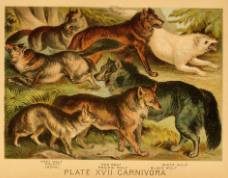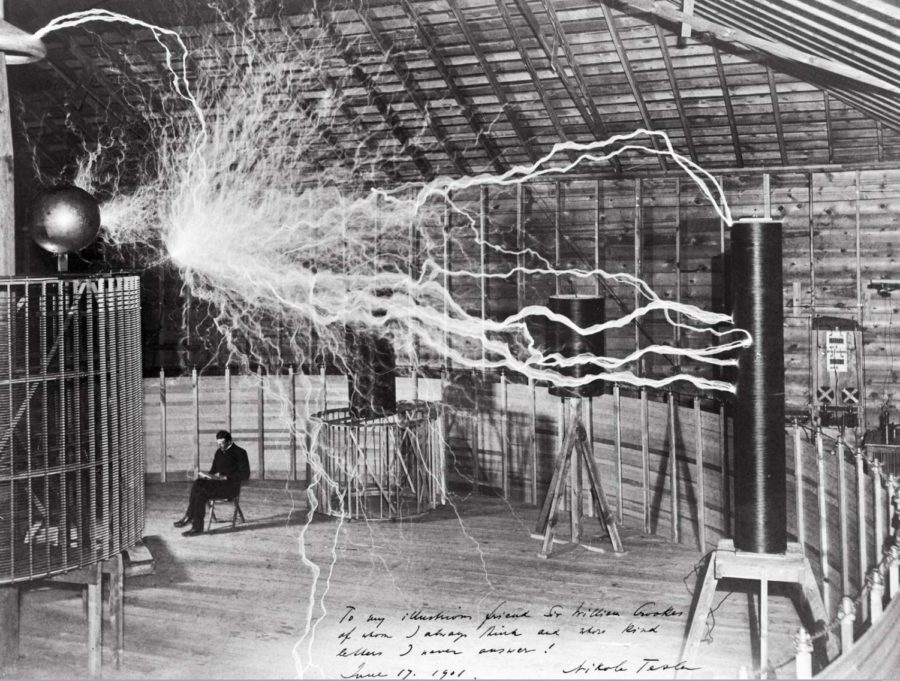The Powerful Life of Nikola Tesla
February 21, 2022
Nikola Tesla was born on July 10th, 1856, in what was then the Hungarian Empire. His father was a priest in the Serbian Orthodox Church, while his mother managed their family farm. She also took care of Nikola and his four siblings. Growing up, Nikola displayed remarkable creativity and intelligence and would watch as his mother would create small household appliances from scratch. When Nikola was seven, in 1863, his only brother Daniel was in a riding accident that led to his death. The shock of the event shook Nikola to his core and caused him to report seeing visions of fire in the air around him. This was the first sign of a lifelong mental illness that would be furthermore in Nikola’s everyday life.
Once he got older, Nikola began training to become an engineer, although it was against his father’s wishes for him to become a priest. He attended the Technical University in Graz, Austria, and then later went to the University of Prague. In 1882, he was taking a walk when he was struck by an idea for a brushless AC motor, and quickly made his first sketches of its rotating electromagnets in the sand of the path he was standing on. This breakthrough was the first step towards his discovery of the successful utilization of alternating currents in electricity. Later in 1882, he moved to Paris and began a job repairing direct current (DC) power plants with the Continental Edison Company. While on an assignment for his job, after his work hours, he constructed his first induction motor. Fueled by his success, he sailed to New York in America in 1884. His luggage consisted of four cents, a few poems he wrote, and calculations for a flying machine.
He was hired as an engineer at Thomas Edison’s Manhattan Headquarters. He worked there for a year, and in that time he impressed Edison with his diligence and ingenuity. Edison pulled Nikola aside one day, telling him that he would pay Tesla $50,000 for an improved design for Edison’s DC Dynamos. Tesla took the challenge head-on and spent months experimenting to finally find a solution and presented it to Edison for the money. Edison viewed the research and objected to the ideas, telling him that “Tesla, you don’t understand our American humor,” and refused to give him any money. Tesla soon quit, separating from Thomas Edison’s methods and their different backgrounds as inventors.
Tesla then tried to start his own Tesla Electric Light Company, but was unsuccessful and the business fell through. Stuck digging ditches for $2 a day, Tesla took the challenge of seeking out backers to cover his research into alternating currents. He was successful in finding support and was granted more than 30 patents for his inventions in 1887-1888 and was invited to address the American Institute of Electrical Engineers on his work. It was at that lecture that George Westinghouse took interest in Tesla, believing he could change the “Battle of the Currents” between Edison and Westinghouse power systems.
Westinghouse soon hired Tesla, buying his patents for AC motors and giving him his own lab. It was in this lab that Tesla invented electric oscillators, meters, improved lights, and the high-voltage transformer known as the Tesla coil. He also gave exhibitions in his laboratory by lighting lamps with electricity that flowed throughout his body. The year he created the Tesla Coil, in 1891, was also the year he finally had complete United States Citizenship.
In 1893, Tesla and Westinghouse lit the World’s Columbian Exposition in Chicago, where they secured a partnership with General Electric to install AC generators at Niagara Falls. It was at the falls where they created the first modern power station.
Their excitement at their success was short-lived when, in 1895, Tesla’s New York lab burned, destroying a year’s worth of notes and equipment. After the fire, Tesla moved to Colorado Springs for two years, before returning to New York in 1900. When he returned, he secured funding from J.P. Morgan and began building a global communications network in Long Island. He quickly ran out of funds for the large tower, and Morgan would not fund him any further.
At the end of his life, Tesla spent his time in a New York hotel continuing to make new inventions as his mental health got severely worse. He had an obsession with the number three, constant washing of his skin, and communicating with the local pigeons. If anyone asked, Tesla would tell them the pigeons were whispering that he was going to die and that they glowed brighter than any electric current when they flew in his face.
Tesla died on January 7, 1943, in his hotel room. After his passing, the U.S. Supreme Court acknowledged Tesla’s innovations in radio, and with the AC system, he created the remaining global standard for power transmission today.










































































































































